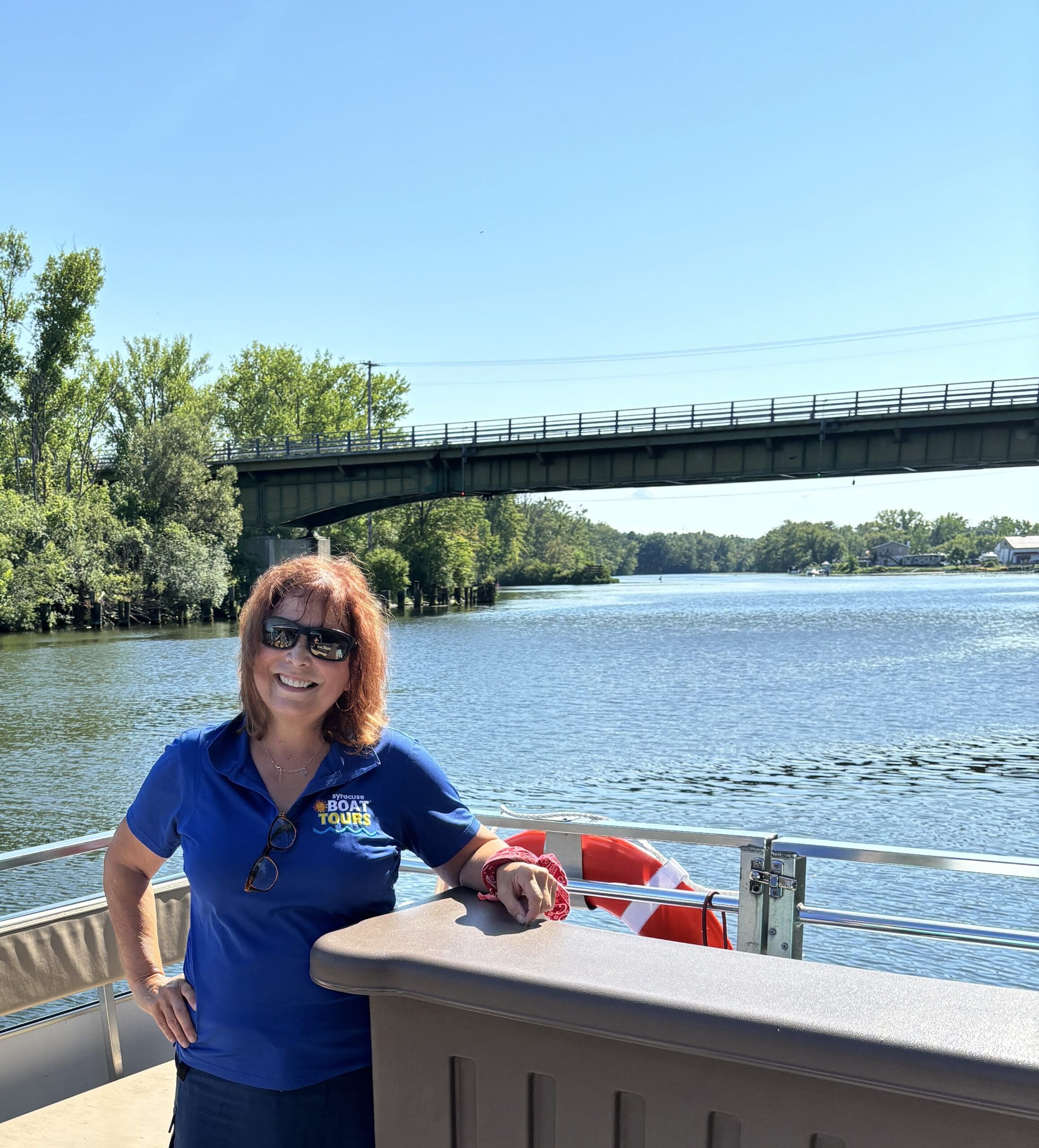By Christine Dunne
Photos by Maureen Tricase/Capture Your Moments
When the Fayetteville Fire Department was rebuilt in 2011, it included a number of new amenities specifically for women. While the additions were voter-approved, they were largely the vision of Fire Chief Paul Hildreth.
“He has made it his goal, in a professional heavily dominated by men, to be sure the women have equal facilities and training,” said Kristin Palazzoli, a firefighter with the department. “We have our own locker rooms, bathrooms, and showers. This is notthe norm in fire service.”
In addition, she said, the Fayetteville Fire Department has women in positions of authority. For example, she is an apparatus operator. This is also unusual in fire service, and “100 percent” due to Hildreth’s leadership.
“My job is to get the vehicle ready to go, to make sure the water gets to the guys inside,” Palazzoli said. “He never told me, ‘No, I couldn’t do that.’ We’ve never been discouraged, the women have never been discouraged, from taking on anything we want to take on. And that’s something really special to our department.”
Palazzoli said it may sound silly to be commending a fire chief for treating women equally to men. But the reality is that many fire departments still do not put this into practice. That is true, reaffirmed Judy Hamilton, a retired Fayetteville firefighter who as part of a research project has interviewed over 50 women nationwide about their experience in fire service.
“Even in paid departments women have so many obstacles to face, and not just sexual harassment,” Hamilton said. “Many times, there are threats to their lives in one way or another.”
For instance, in one rural fire department a female volunteer showed up for her first day. The department gave her a Scott air pack, dropped her off inside a house, and set the house on fire. They told her to say in the house until they came to get her, yet had no plan to do so. It wasn’t until they realized she wasn’t leaving that they went into rescue her.
“That’s the kind of thing that happens supposedly as a joke,” she said.
This was reinforced at a national fire service meeting where 90 percent of women said they have felt their lives in danger while on the scene of a fire.
“That’s why Kristin and I feel like Paul is doing an incredible job,” Hamilton said. “There are not people like him working to get someone involved in the fire service and providing the training and support they need. It’s not that there aren’t any, but it’s pretty rare.”
She added that seemingly little things, like ensuring that women’s fire gear fits appropriately, can go a long way toward ensuring safety.
“If they don’t have boots in their size and have to wear something five sizes too big, you’re going to trip inside the fire and then you have real problems,” she said.
Anytime female firefighters have a problem they can approach Hildreth and he takes care of it right away, Palazzoli and Hamilton said. In addition, he saw to it that a department maternity policy was drawn up, fair, and enacted.
Hildreth, who has been involved with the department since 1981, became fire chief in 2007, and moved up to full-time career chief in 2015, said fairness is a top goal.
“We treat them fair,” he said of female firefighters. “They don’t come in as female, they come in as an employee. They have the same opportunities as anyone else in the organization. As long as they prove they can do it.”
Creating dedicated facilities for women and policies around appropriate conduct help avoid gender-related issues that may otherwise arise, he added. And if an issue does arise, it should be handled right away so it doesn’t linger.
“There’s too much activity going on in the fire station to worry about somebody doing something inappropriately,” he said.
All of this helps create a culture where women are treating equally to men.
Hildreth said there have been females in the organization for as long he can remember. Currently, 18 of the department’s 109 members are women (all are volunteers). This is somewhat of an increase in recent years, driven by interest in the EMS side of the department.
“We need EMTs, and we need paramedics, and the females that generally come in the door are EMTs,” he said.
Of these, one woman is an EMS lieutenant, and another is an EMS mentor that’s a crew chief. On the fire side of the house, two women are pump operators. When the department does its recruiting, it tries to make sure that both a man and a woman are represented.
“If you have a bunch of guys standing there, a woman’s probably not going to want to go to the booth,” he said.
The department is always recruiting for women and men alike, and has a wide variety of volunteer positions available.
“Anything they want to do, we’ll accommodate anyone to do anything,” Hildreth said. “Always.”





